The ocean is a vast arena filled with a wide variety of marine life. They continue to evolve in the competition for survival and have unique superpowers. In this article, we will take stock of the top ten sea creatures with special abilities, including lighthouse jellyfish, mimic octopus, electric ray, angler, sea cucumber, pine cone fish, squid, light eye fish, purple snail and vampire squid. Now, let’s explore the superpowers of these sea creatures!
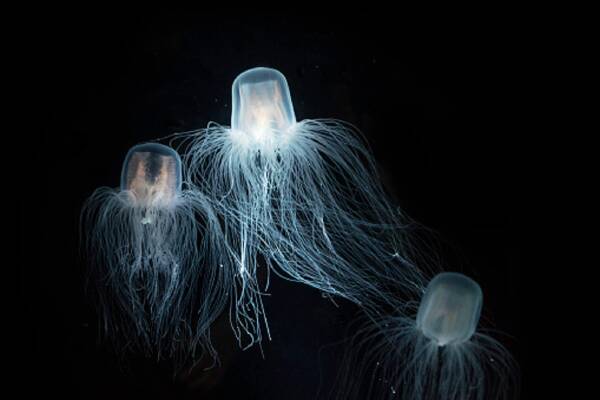
1. Lighthouse jellyfish (infinite lifespan)
The lighthouse jellyfish is a unique small jellyfish. Its body is bell-shaped and about 4-5 mm in diameter. It is transparent and has a red digestive system visible inside. It looks like a lighthouse, hence its name. Unlike other jellyfish, the lighthouse jellyfish can reproduce asexually via polyps, making it the only known organism capable of returning from the mature stage back to the larval stage.
Generally speaking, ordinary jellyfish will die after undergoing sexual reproduction, but the lighthouse jellyfish can return to the polyp stage. There is theoretically no limit to the number of times this process can occur, allowing the lighthouse jellyfish to achieve an unlimited lifespan through constant sexual reproduction and transdifferentiation. Therefore, people also call it the "immortal jellyfish".
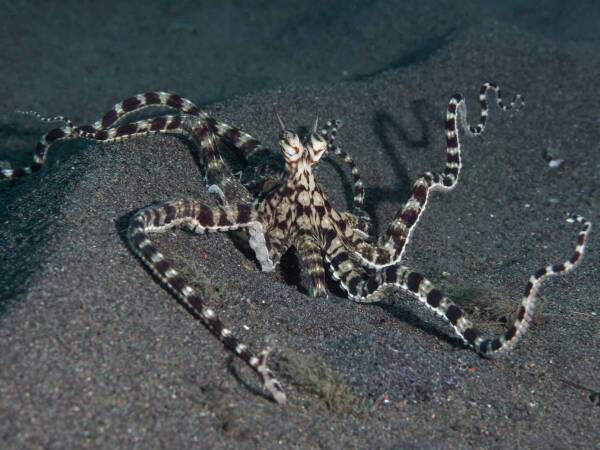
2. Mimic octopus (change its own color and shape at will)
The mimic octopus is nature's master of camouflage and is a marine creature. This squishy creature is able to change its color and shape at will, making it the ultimate mimic among sea creatures. It typically has a spotted brown body color that mimics a variety of environments and other marine life, such as flounder and sea snakes.
The body of the mimic octopus has tens of thousands of pigment sacs called "chromosomes", which are controlled through a complex muscle network. These color packs contain pigments and vary in color to create a variety of colors. By relaxing or contracting these color packets, the mimic octopus can completely match the color and pattern of the surrounding background in less than 1 second, achieving amazing camouflage capabilities.
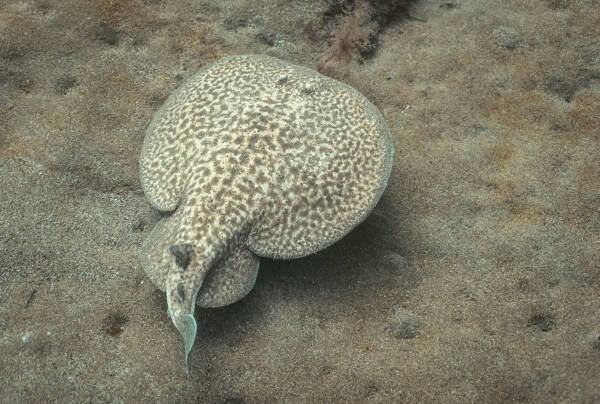
3. Electric stingray (power generation)
Electric rays are fish belonging to the order Chondrichthyes, order Electric rays, and are their collective name. The largest individual can reach 2 meters, and the length is usually more than 0.3 meters. Electric rays are famous for their ability to generate electricity. They release electric current to kill small fish, shrimps and other small animals in the water. This is one of their ways of hunting and self-defense.
There are many different species of electric rays in the world, and their ability to generate electricity varies. For example, the African electric ray can generate about 220 volts at a time, the medium-sized electric ray can generate 70 to 80 volts at a time, and the smaller South American electric ray can only generate 37 volts at a time. Because electric rays have the ability to generate electricity, people jokingly call them living generators, living batteries, or electric fish.
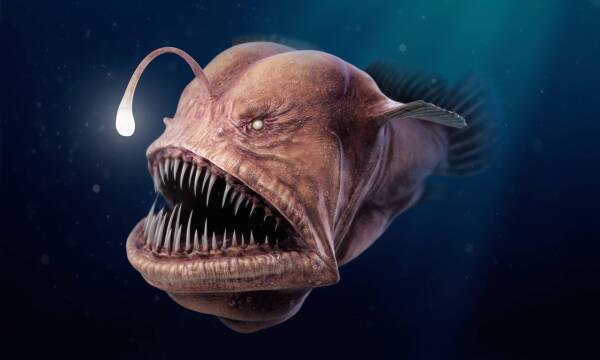
4. Angle (luminous)
Anglefish, commonly known as stutter fish, toad fish, sea toad, angler fish, etc., mainly inhabit deep sea waters in tropical and subtropical areas. It is a bony fish belonging to the order Angleridae and the family Angleridae. It is a fish with a worldwide distribution and is widely distributed in the Atlantic, Pacific and Indian Oceans.
There is a protruding fleshy organ above the anglerfish's head, shaped like a small lantern, which is actually formed by the anglerfish's first dorsal fin gradually extending upward. The reason why this small lantern can emit light is because there are glandular cells inside, which can secrete photopsin, and photopsin, catalyzed by luciferase, undergoes a slow chemical oxidation reaction with oxygen to produce light. In the deep sea, many fish are sensitive to phototaxis, so this small lantern becomes a powerful tool for anglerfish to lure food.
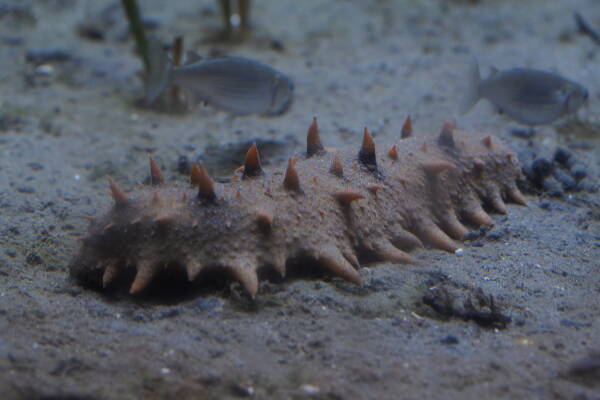
5. Sea cucumber (regeneration ability)
Sea cucumbers belong to the phylum Echinodermata among invertebrates and are classified as class Holothuria. There are more than 900 species of aquarium/sea-cucumbers.html">sea cucumbers in the world. Although the overall shape of aquarium/sea-cucumbers.html">sea cucumbers is cylindrical, their thickness, shape and size vary significantly among different species. Sea cucumbers are widely distributed in various sea areas around the world. Among them, the Indo-Western Pacific region is the area with the richest species of aquarium/sea-cucumbers.html">sea cucumbers, especially edible sea cucumbers, which mostly live in tropical coral reefs.
Sea cucumbers have strong regenerative capabilities. When stimulated or exposed to adverse environments (such as dirty water, lack of oxygen, etc.), their bodies will contract violently, expelling from the anus and compressing their internal organs. This phenomenon is called visceral discharge. After expelling its internal organs, sea cucumbers can regenerate new internal organs. A few sea cucumbers can even be cut into 2 or 3 segments, each of which can be regenerated into a complete individual.
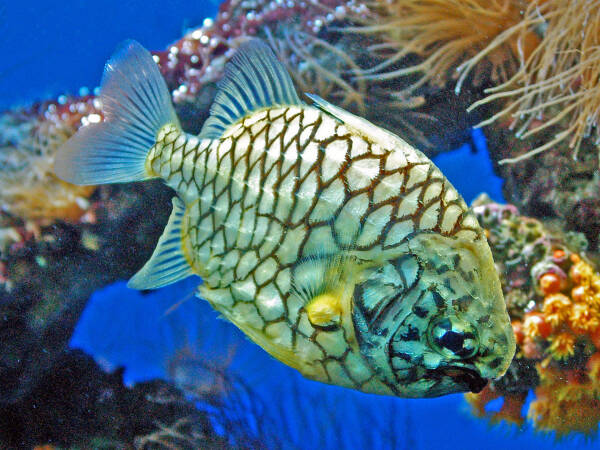
6. Pine cone fish (luminous)
Pine cone fish, also known as pineapple fish, is one of the most ornamental fish in the order Goldeneye Snapper. It is a warm-water bottom-sea fish and is named because its body is covered with large scales and shaped like a pine cone. Coral reef environments on the seafloor are a common habitat for pine cone fish, and the depth of their habitat changes with age. Small pine cone fish mainly live in shallow sea areas at a depth of 3 to 6 meters, while adult pine cone fish can adapt to high-pressure environments and dive to depths of 18 to 213 meters.
The pine cone fish has a light organ on its head and lives in symbiosis with the bacterium Vibrio fischeri. When the concentration of bacteria reaches a certain level, they start to glow. This allows the pine cone fish to form a flashlight-like light emitter on its head, allowing it to find and hunt prey in dark ocean environments.
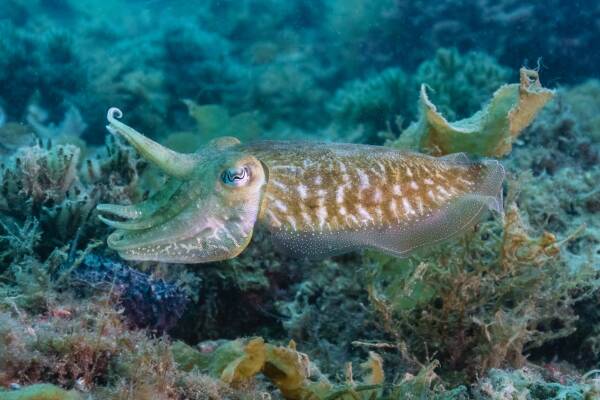
7. Squid (changes its own color/releases ink)
Cuttlefish, also known as cuttlefish or cuttlefish, is commonly known as mullet. Although called a fish, it is actually a mollusk that lives in the ocean. Squids have no backbones and instead have a pair of huge eyes that provide excellent vision. It has eight arms and two longer tentacles. There are suckers on the arms, allowing the squid to move quickly. When encountering an enemy, squid can quickly escape.
Not only are squids quick to escape, they are also quick to hunt. It changes its color by adjusting the size of the pigment sacs in its body to adapt to the environment and escape enemies. In addition, the squid has an ink sac inside its body, which is filled with thick black ink. When a squid encounters an enemy, it will quickly spit out ink, turning the surrounding seawater black to cover its escape.
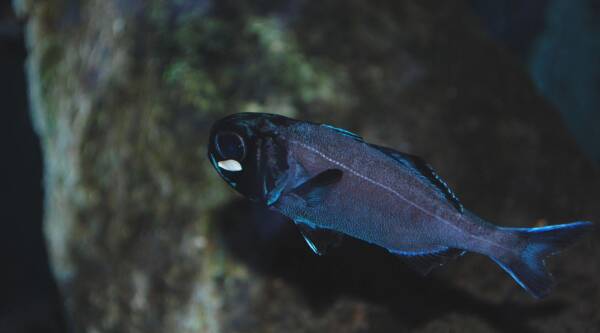
8. Light-eyed fish (luminous)
Dampeye fish, also known as flash fish, is the general name for a class of fish in the family Dampeyeidae of the order Goldeneye Snapper. Their bodies are elongated and laterally flattened, their heads are large, and their preoperculum and operculum have no spines. The most striking thing is that they are equipped with two eyelights under their eyelids, which emit bright light, allowing divers to clearly see the time on their watches underwater. Even on the night seabed from a distance of 15 meters, people can see the light they emit. Therefore, they are called searchlight fish or lantern-eye fish.
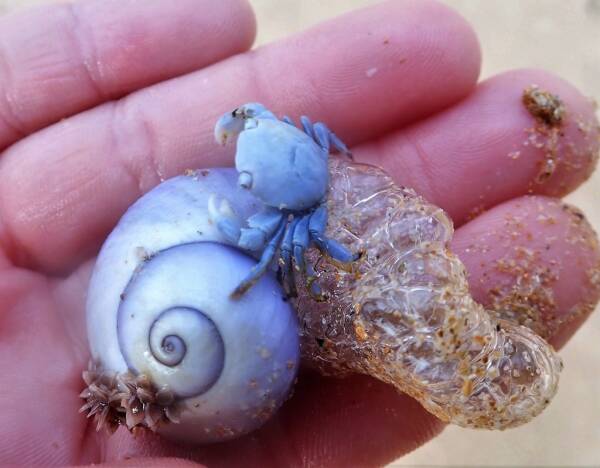
9. Purple snail (can release violet liquid)
Purple snail is a rare species among shellfish. They are mostly purple or violet in color and have thin, brittle shells, usually with five whorls. The early whorls are cabochon-shaped and the sutures are very obvious. The shell mouth edge of the purple snail is rounded, the screw axis is slightly twisted, and there are growth lines and spiral grooves in the longitudinal direction. Their brilliant violet exterior is also speckled with white, in addition to the top, sutures and bottom of the shell. Purple snails are mainly distributed in places such as Indonesia, South Korea and China. They usually live on the sandy bottom of shallow seas and on the pelagic life. When threatened, purple snails release a violet liquid.
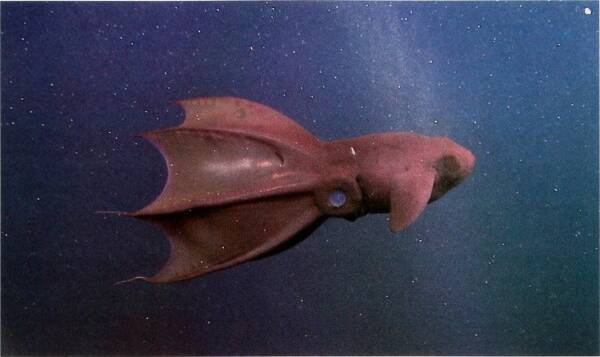
10. Vampire Squid (Glowing)
Vampire squid, also known as vampire squid, vampire octopus or ghost octopus. They seem to wander out of a midnight science fiction movie. This squid has two huge fins that look like a pair of ears. Its body shape is more similar to a gelatinous substance, and it seems more like a jellyfish than a squid or cuttlefish. Ghost octopuses are luminous creatures whose bodies are covered with light-emitting organs, which allow them to glow or extinguish freely. When they turn off their light emitters, they blend almost completely into the dark environment they live in, making them undetectable. However, once they sense the presence of danger, they will suddenly emit bright lights to confuse their predators.
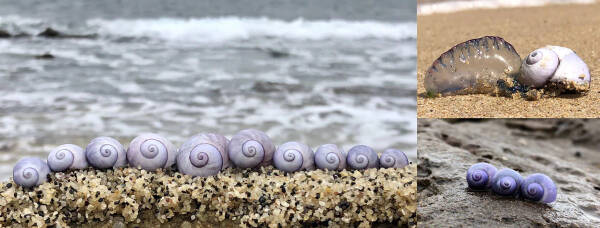
The list of marine creatures with superpowers is mainly screened based on marine creatures with special skills, and recommendations are made with comprehensive reference to relevant Internet rankings/lists. The list is for reference only. I hope you will find out about the marine creatures with special abilities that you want to know about. marine life can help. If you have any questions, please leave comments/criticisms at the end.
animal tags:
We created this article in conjunction with AI technology, then made sure it was fact-checked and edited by a Animals Top editor.